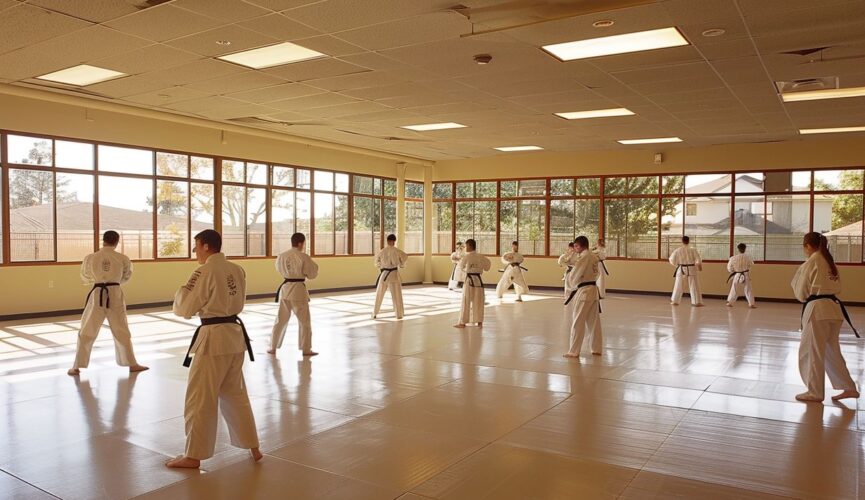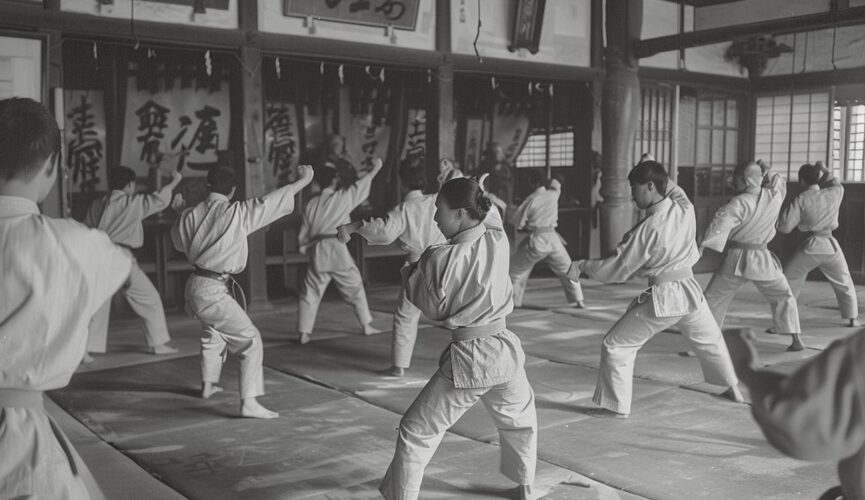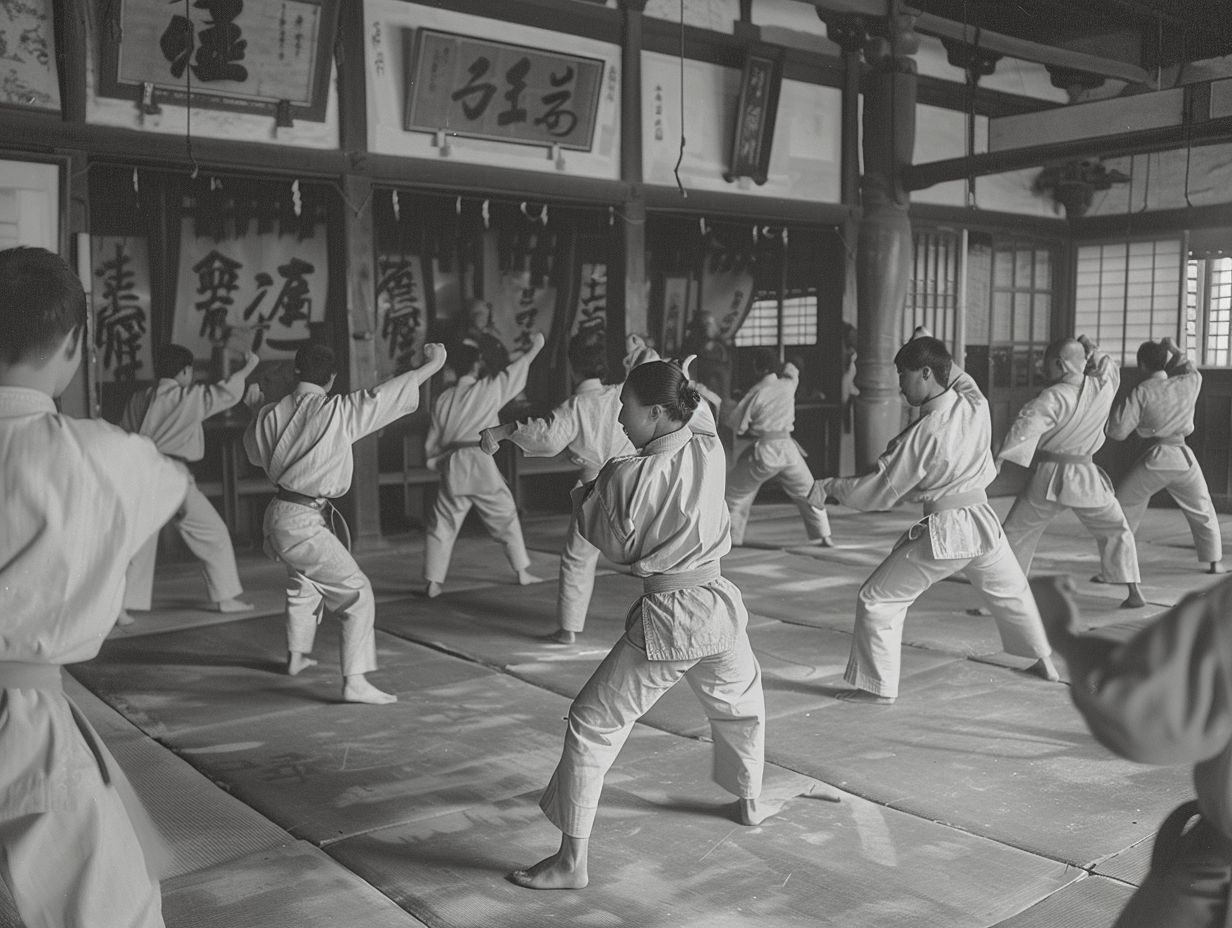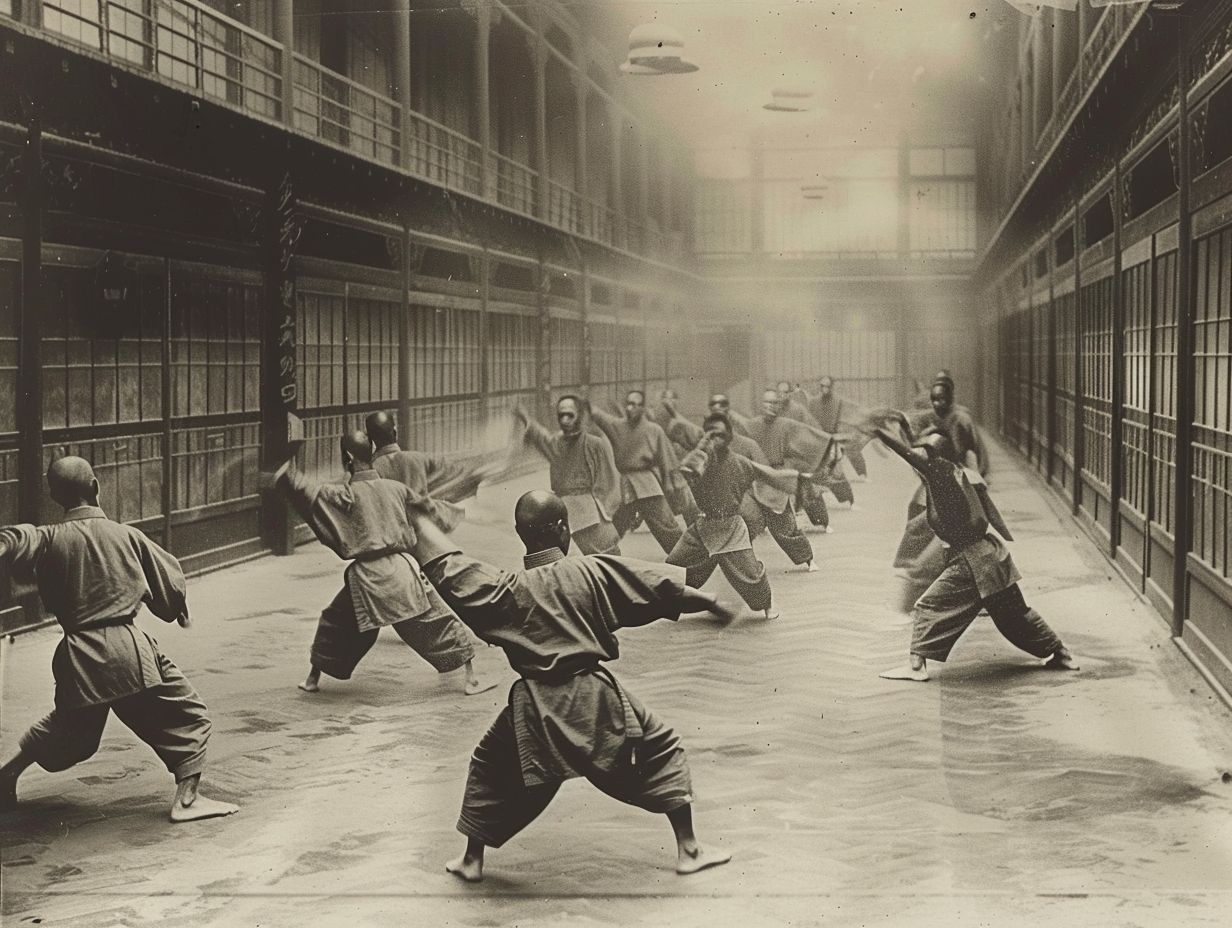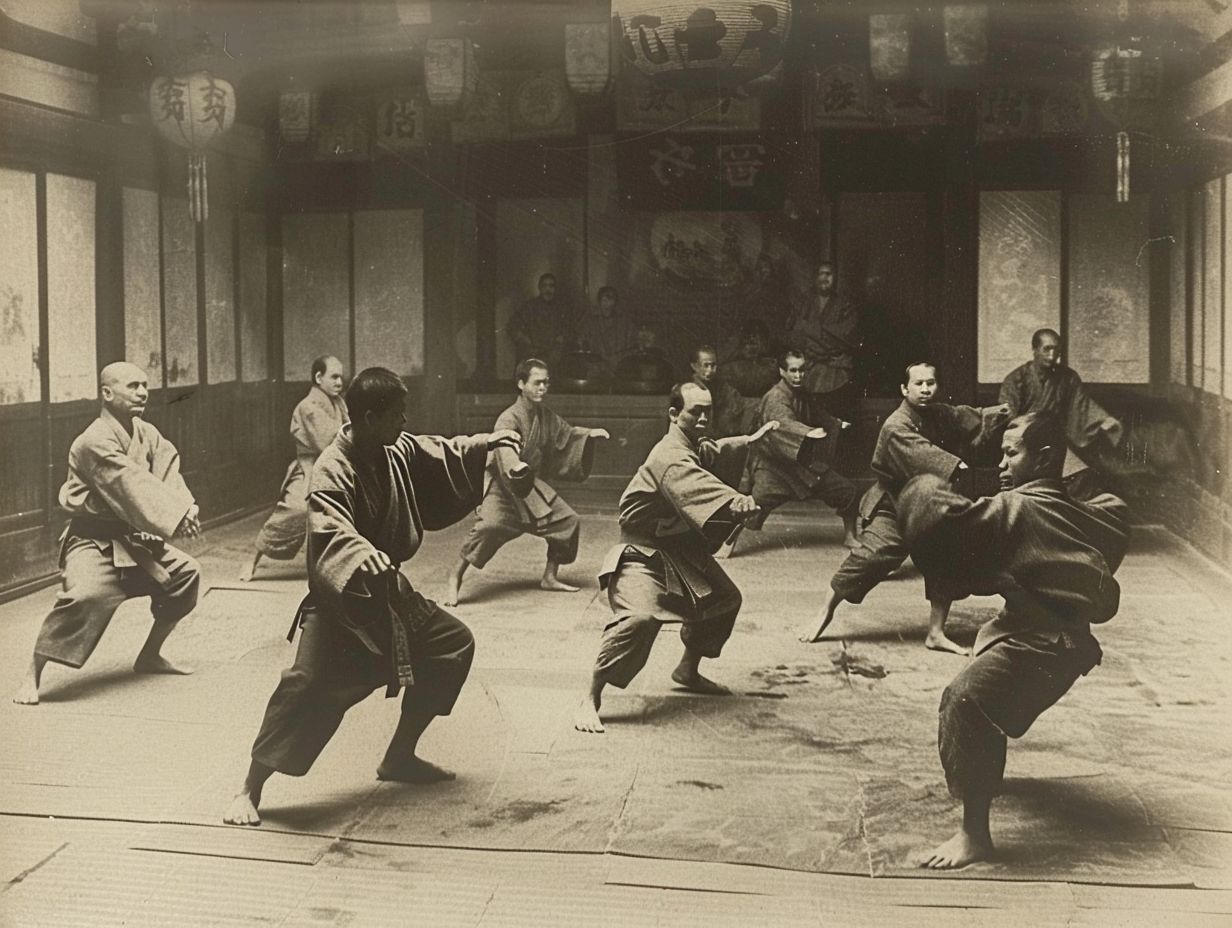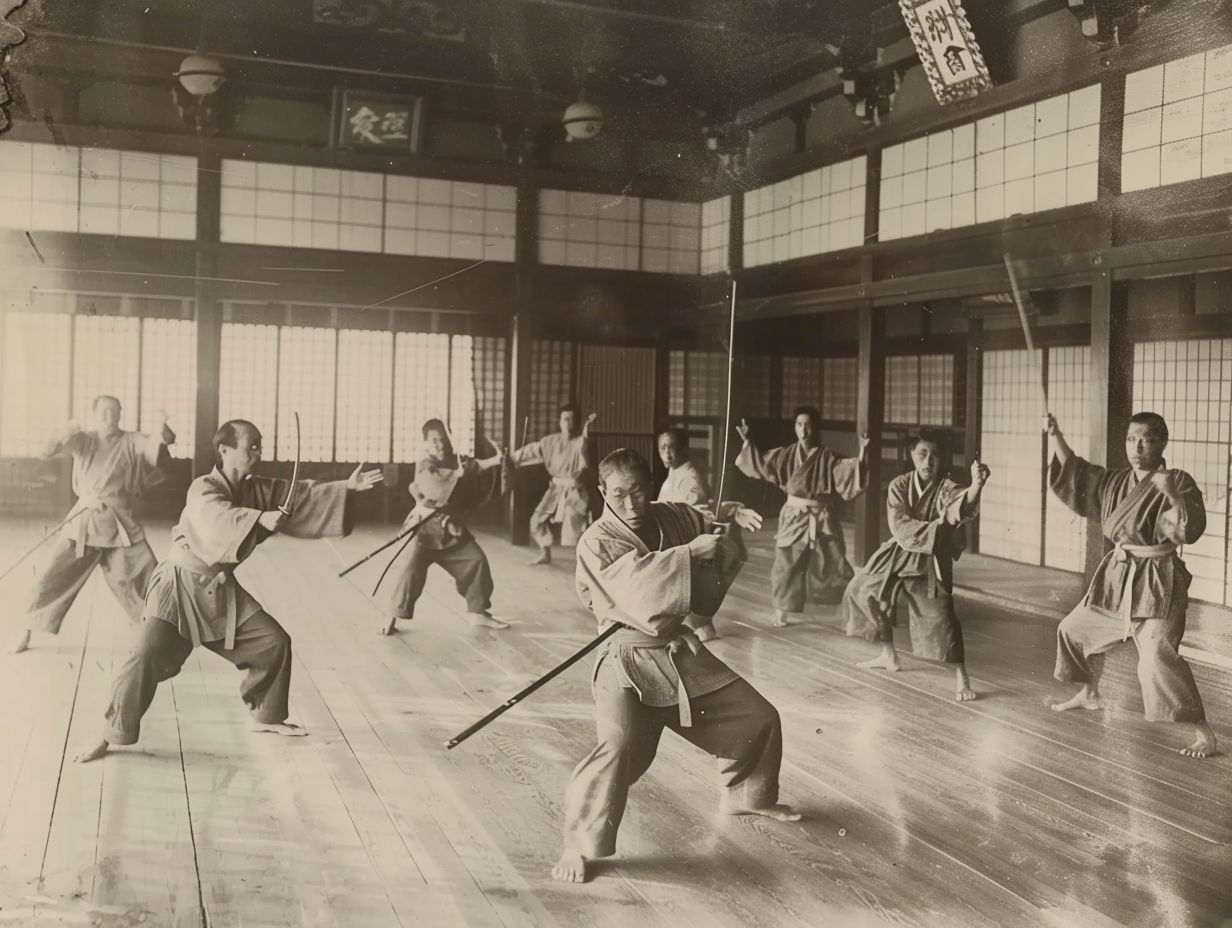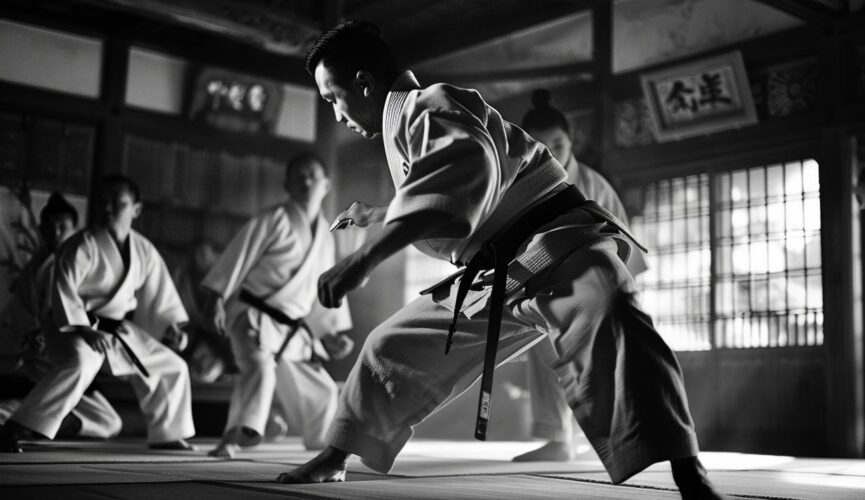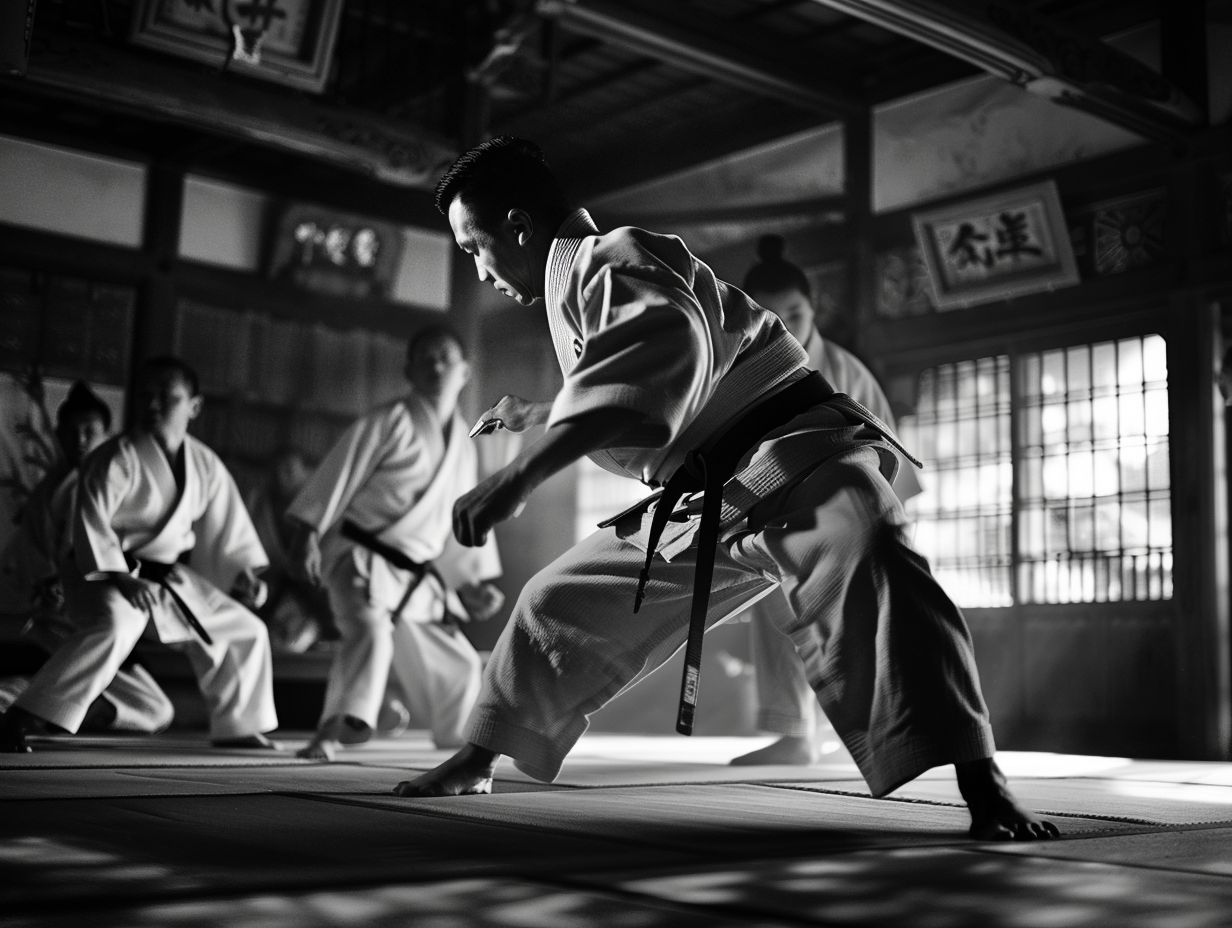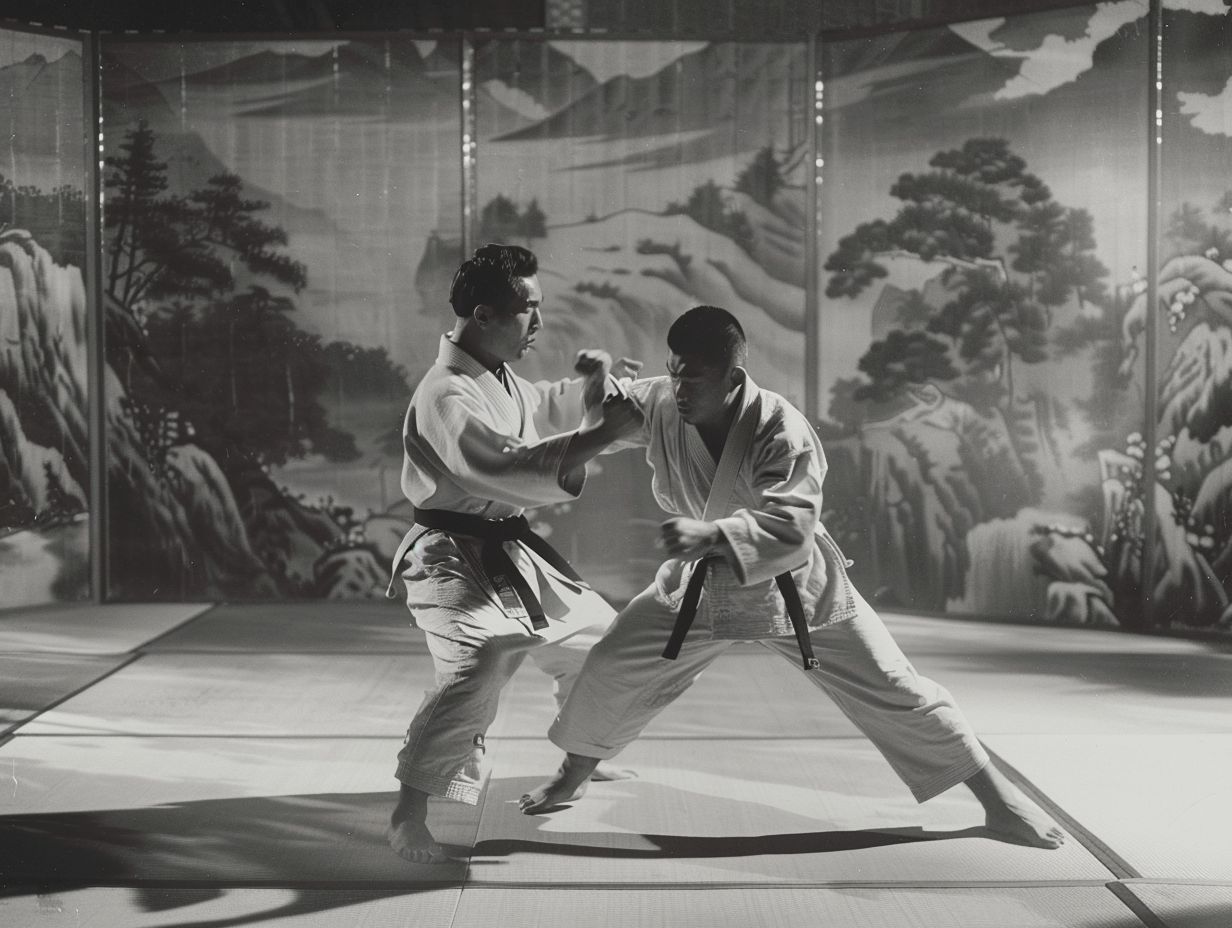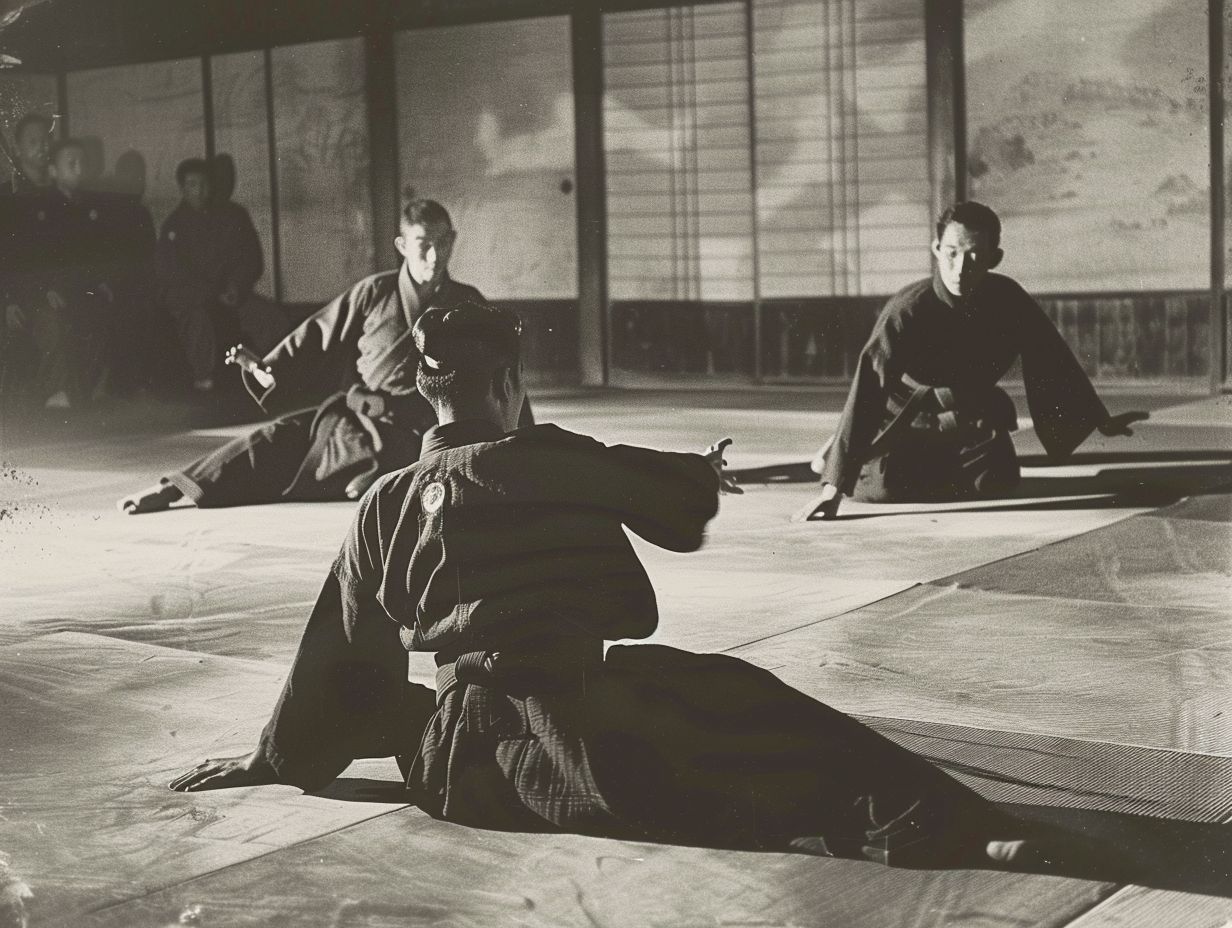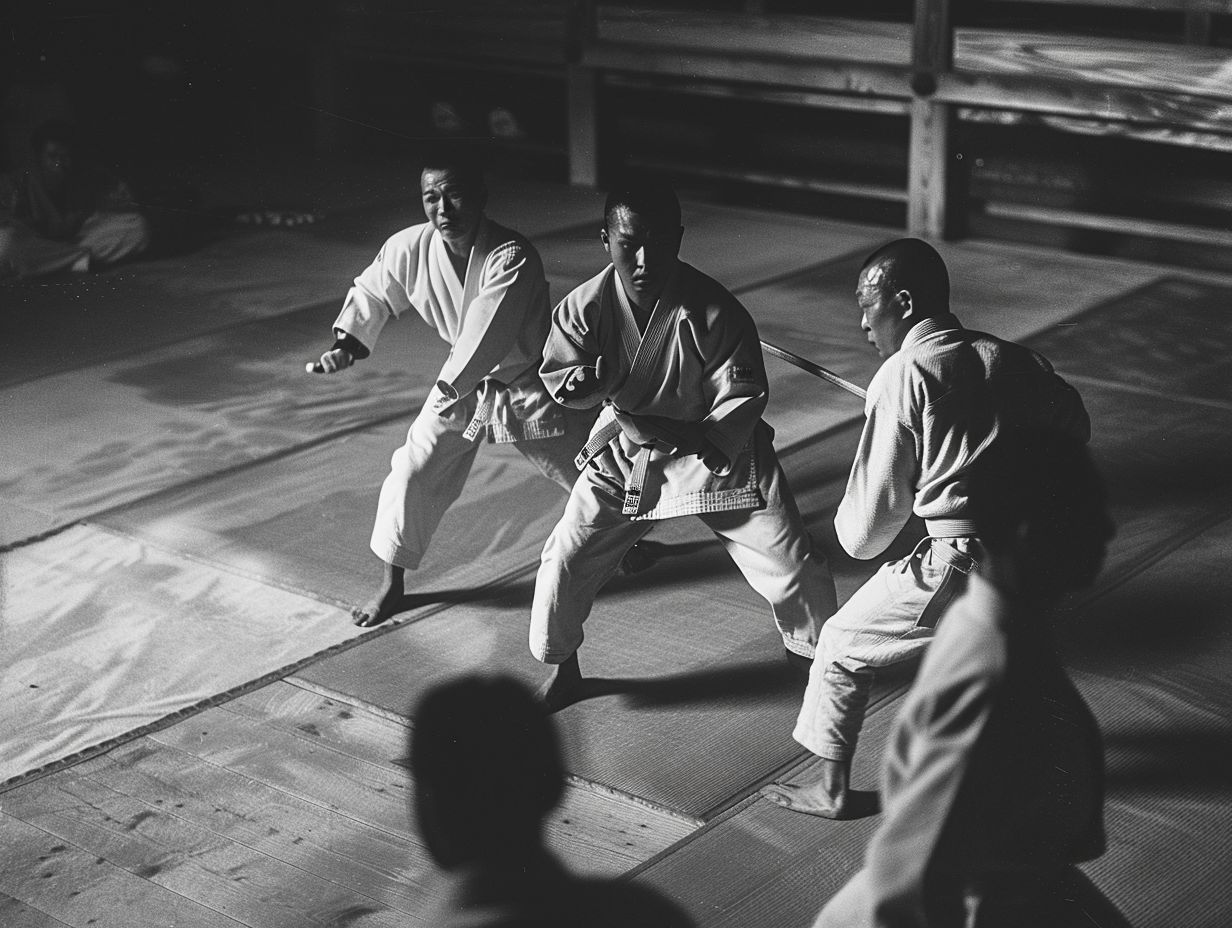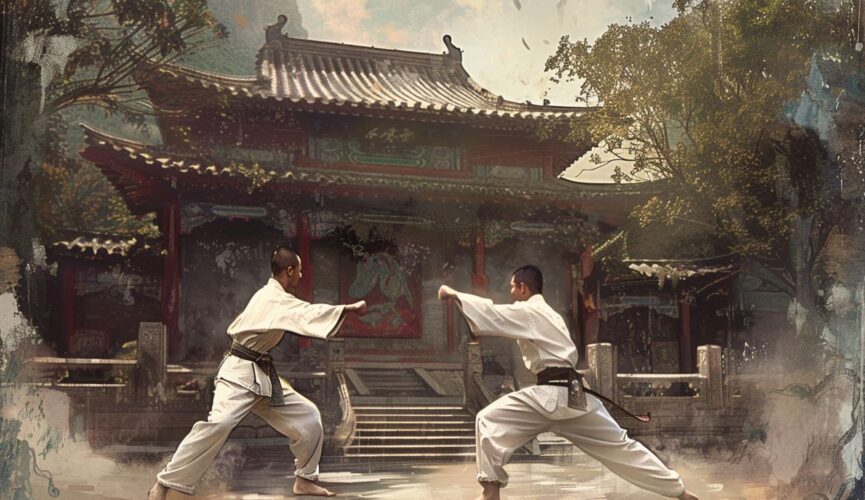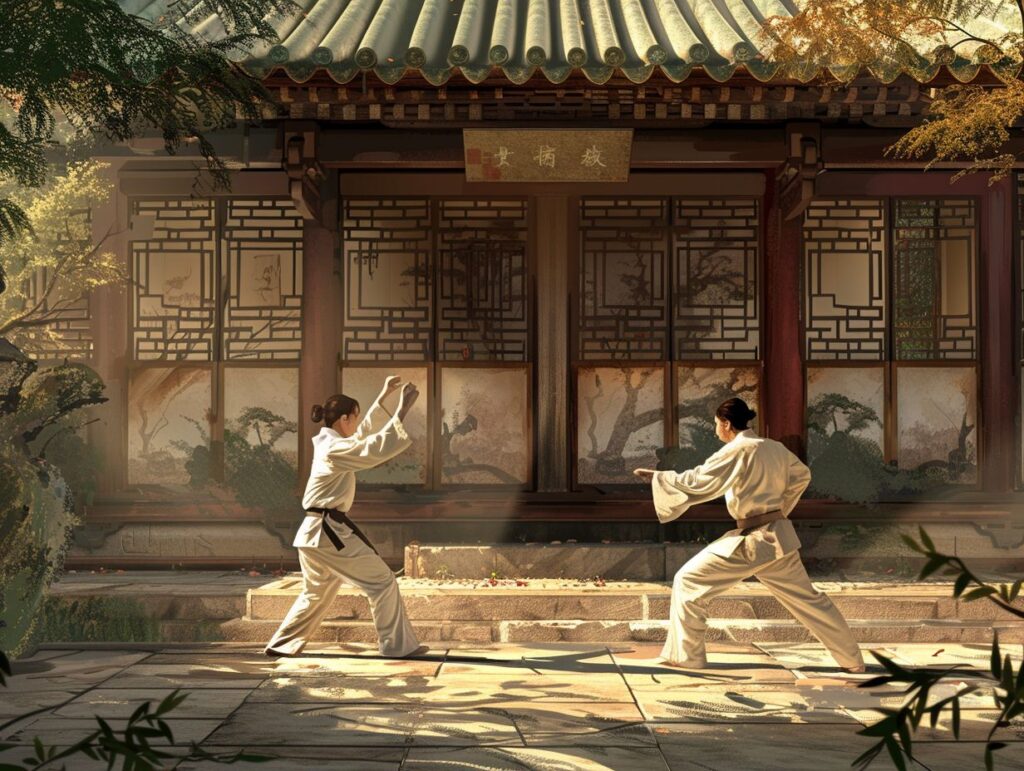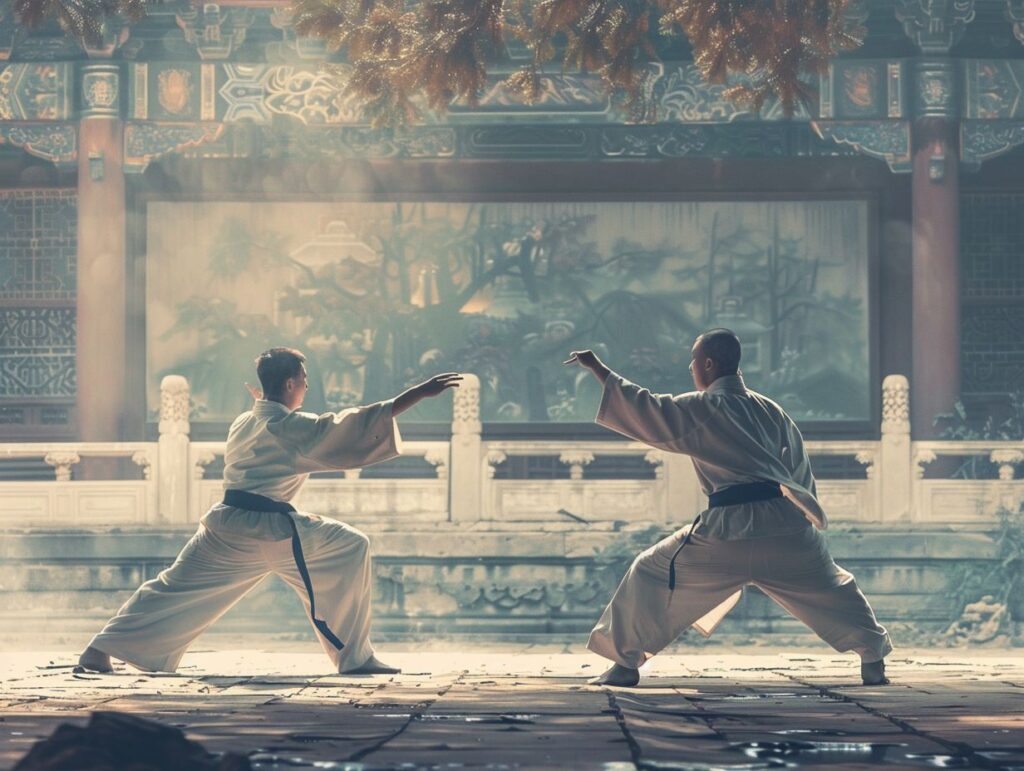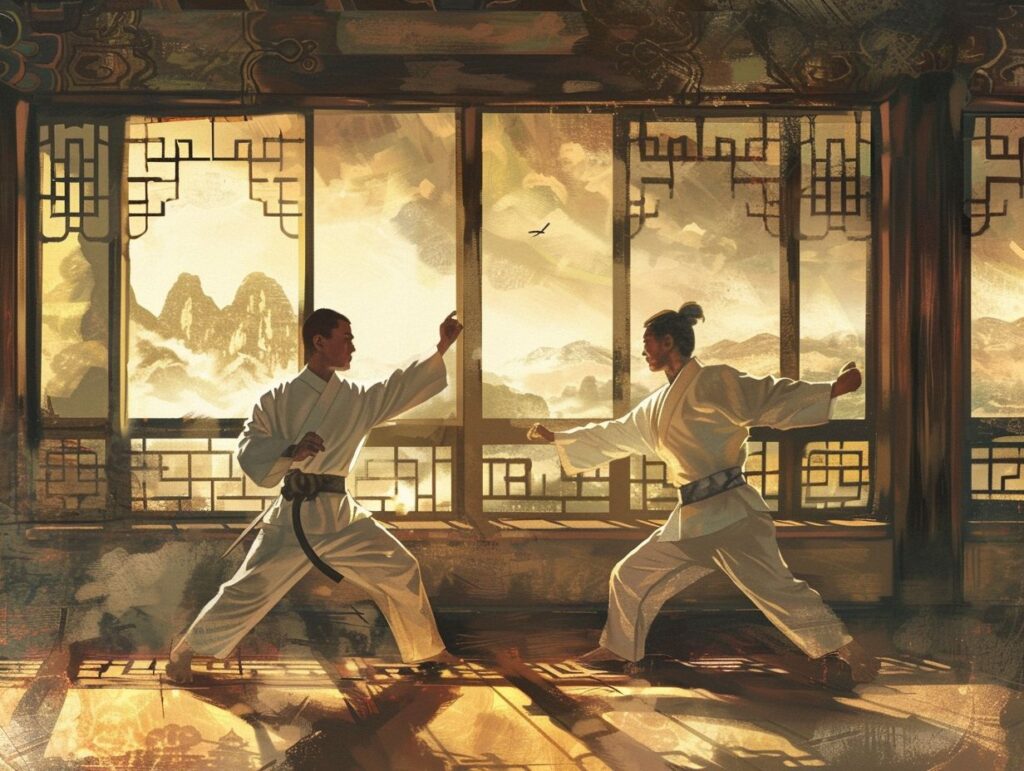You’re about to dive into the world of Kempo Karate, a martial art with deep roots and an interesting journey through history.
We’re going to explore the origins of Kempo Karate and shine a spotlight on the key figures who have influenced its growth. From fundamental beliefs to combat moves, we’ll dig into the principles of this martial art and how it’s applied today, even branching out into other disciplines.
Discover how Kempo Karate has left a mark on popular culture, from its portrayal in the media to its rising fame on a global scale.
The Origins of Kempo Karate
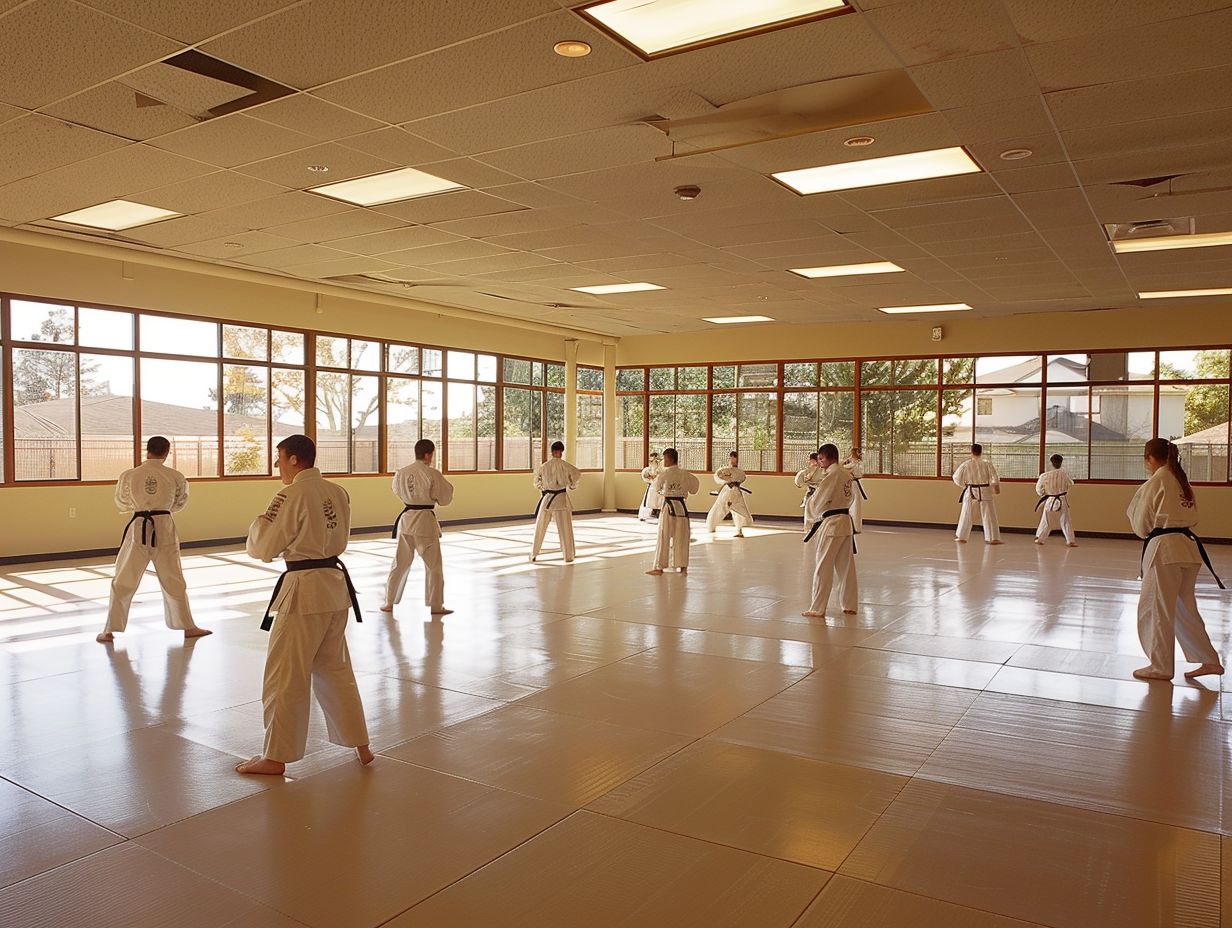
When you look into it, you’ll see that the Origins of Kempo Karate go way back to the martial arts practices that started in Japan. It’s got some real self-defense wisdom behind it and sticks to those old-school techniques. The influence of Japanese culture has been huge on Kempo Karate, molding its principles and techniques over the years.
History and Evolution
The history and evolution of Kempo Karate are a fascinating mix of Chinese and Okinawan martial arts influences passed down through generations by respected masters. The combat techniques have developed over time to shape the unique style and form that you see in Kempo Karate today.
You can trace these martial arts roots back centuries, with Chinese martial arts bringing in foundational principles like strikes, kicks, and stances, and the Okinawan influence focusing on speed, agility, and adaptability. Masters like Choki Motobu and William K.S. Chow were key players in refining and spreading Kempo Karate techniques, each adding their own special insights to the art. This evolution isn’t just about physical techniques; it also delves into a deeper philosophical understanding of discipline, respect, and self-improvement.
Key Figures in Kempo Karate
Regarding Kempo Karate, you can’t ignore the key figures who really made their mark. These founders and influential masters played a huge role in shaping the art, passing down their lineage, principles, and making some serious contributions to its development. Their influence can be felt all around the globe, showing just how culturally significant Kempo Karate truly is.
Founders and Influential Masters
When you dive into the world of Kempo Karate, you’ll discover that the founders and influential masters weren’t just skilled fighters – they were also wise philosophers who shared some deep insights on self-improvement, discipline, and honor. Their techniques and forms embody the very soul of Kempo Karate’s philosophy.
As you delve deeper into Kempo Karate, you’ll see how their focus on constant self-improvement hits home, pushing you to strive for personal growth and mastery. Discipline isn’t just about what you do physically; it’s about building mental strength that gives you resilience and sharp focus on and off the mat.
The code of honor these masters instilled is like the beating heart of Kempo Karate, molding you to embody values of respect, integrity, and righteousness in every aspect of your life – whether you’re on the mat or out in the world.
Principles and Techniques of Kempo Karate
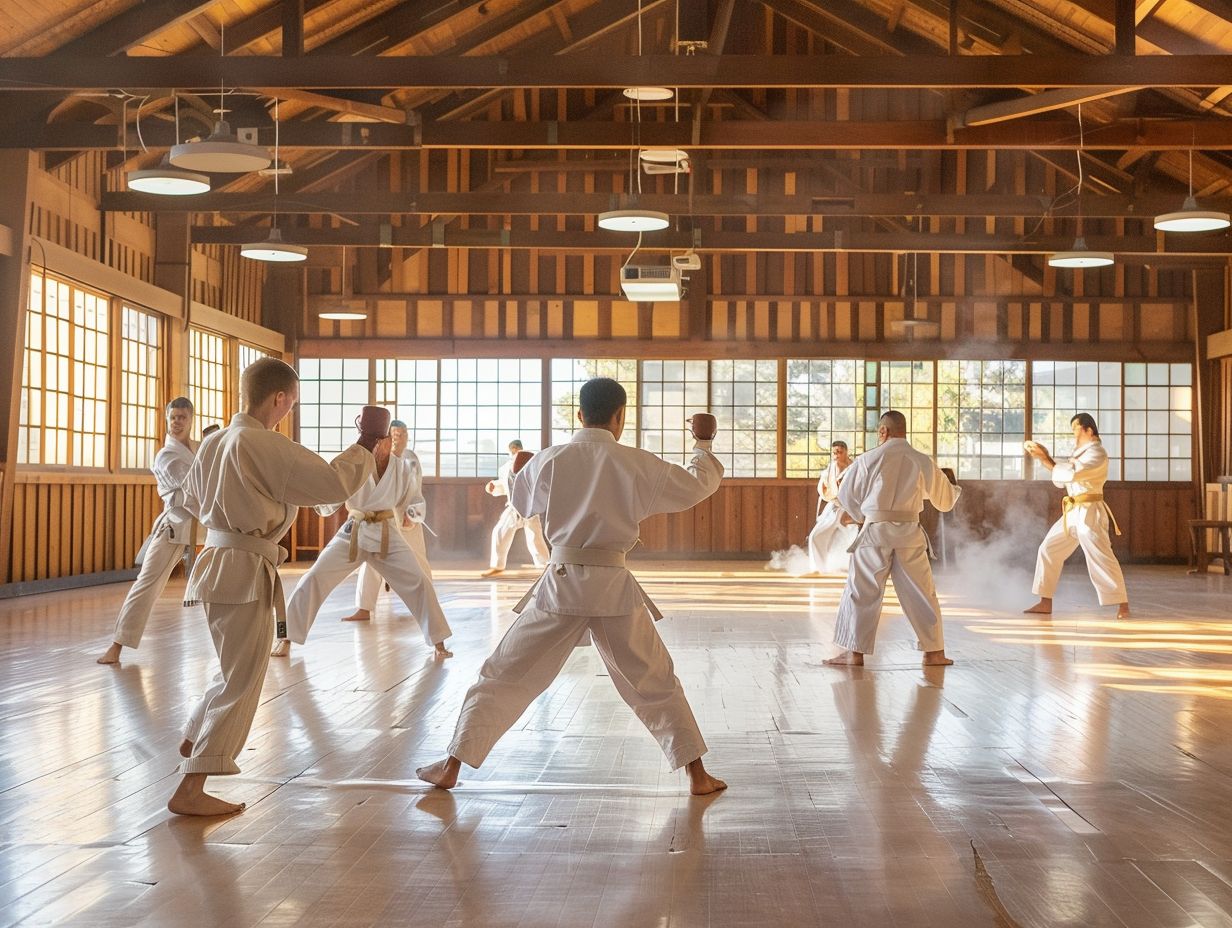
In Kempo Karate, the principles and techniques are all about honing your fighting style. It’s all about nailing those accurate strikes, pulling off effective blocks, mastering those complex kata sequences, and really embodying self-control and respect in every single move you make.
Core Beliefs and Fighting Style
In Kempo Karate, you’re all about meditation for mental clarity, precise punches, grappling skills, self-awareness, etiquette, and discipline.
Regarding meditation in Kempo Karate, you know it’s not just about mental clarity—it’s also about staying focused and calm during training and battles. By mastering precise and powerful strikes, you really get a feel for how your body moves and the impact of each hit.
You also get down with grappling techniques in Kempo Karate, which are all about effective close-range combat moves that make you versatile in different fighting situations. Self-awareness is a big deal too, helping you recognize your strengths and weaknesses for constant personal growth.
And let’s not forget about etiquette—respect and humility are key in the world of martial arts. The discipline you learn in Kempo Karate teaches you to push through, stay dedicated, and develop a killer work ethic.
Modern Applications of Kempo Karate
Incorporate modern combat techniques, innovative training programs, and different combat situations to demonstrate Kempo Karate’s adaptability and effectiveness in today’s world.
Integration with Other Martial Arts
When you combine Kempo Karate with other martial arts, you’re not just enhancing your combat skills – you’re tapping into a whole cultural experience that’s all about self-improvement, staying fit, and growing as a person.
This fusion of Kempo Karate with other martial arts isn’t just about mixing techniques – it’s a meeting of minds that brings together values like discipline, respect, and the pursuit of excellence. These shared beliefs go beyond individual fighting styles, uniting everyone in a shared journey of personal development and health.
By mixing up different training methods, you’re not just getting stronger physically – you’re also sharpening your mind and inner resolve. This blend of approaches highlights the wide-ranging advantages of martial arts, promoting a holistic path to self-betterment and overall well-being.
Kempo Karate in Popular Culture
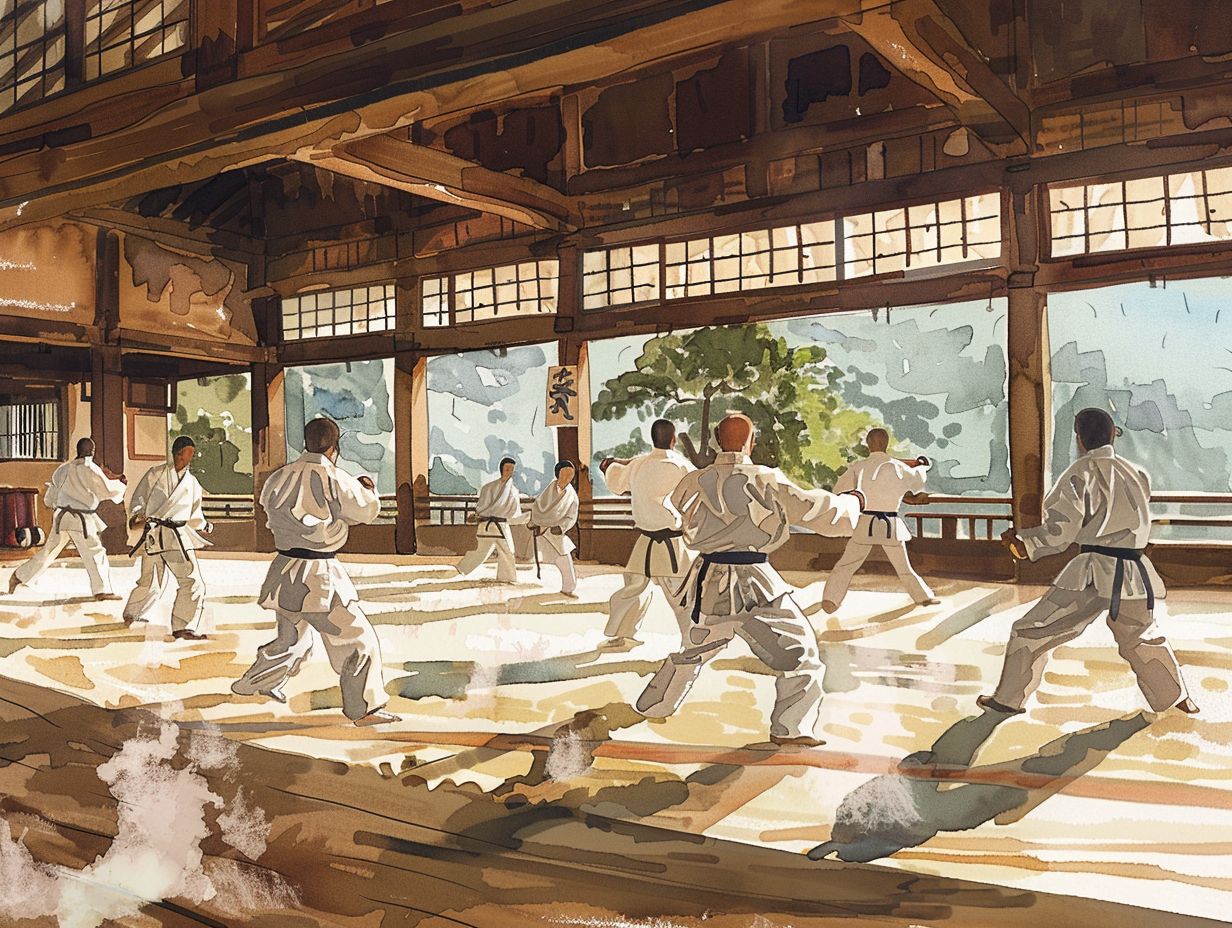
In popular culture, Kempo Karate has made its mark with significant representation in various media forms, helping boost its fame and bringing Kempo Karate tournaments into the mainstream sports and entertainment scene.
Representation in Media and Popularity
When you see Kempo Karate portrayed in the media, it’s all about that journey to the prestigious black belt rank. They focus on the tough competition and athletic skills that make Kempo Karate stand out as a sport and a discipline.
In Kempo Karate, that black belt isn’t just about skill – it’s a symbol of your dedication and commitment to the intense training routine. The sport’s competitive vibe pushes you to constantly test your limits and aim for nothing less than excellence.
The media loves showcasing how Kempo Karate blends physical strength with mental focus, setting it apart from other martial arts. Fans are in awe of the precision in techniques, the smooth movements, and the perfect balance of power and control in every move. It’s like watching a thrilling show that keeps you hooked from start to finish.
Frequently Asked Questions
What is the history of Kempo Karate?
Kempo Karate has roots in China and Japan, with influences from both countries. It was developed as a fighting style to defend against the armed and unarmed attacks of bandits in the Ryukyu Kingdom, now known as Okinawa, in the 17th century.
Who is considered the founder of Kempo Karate?
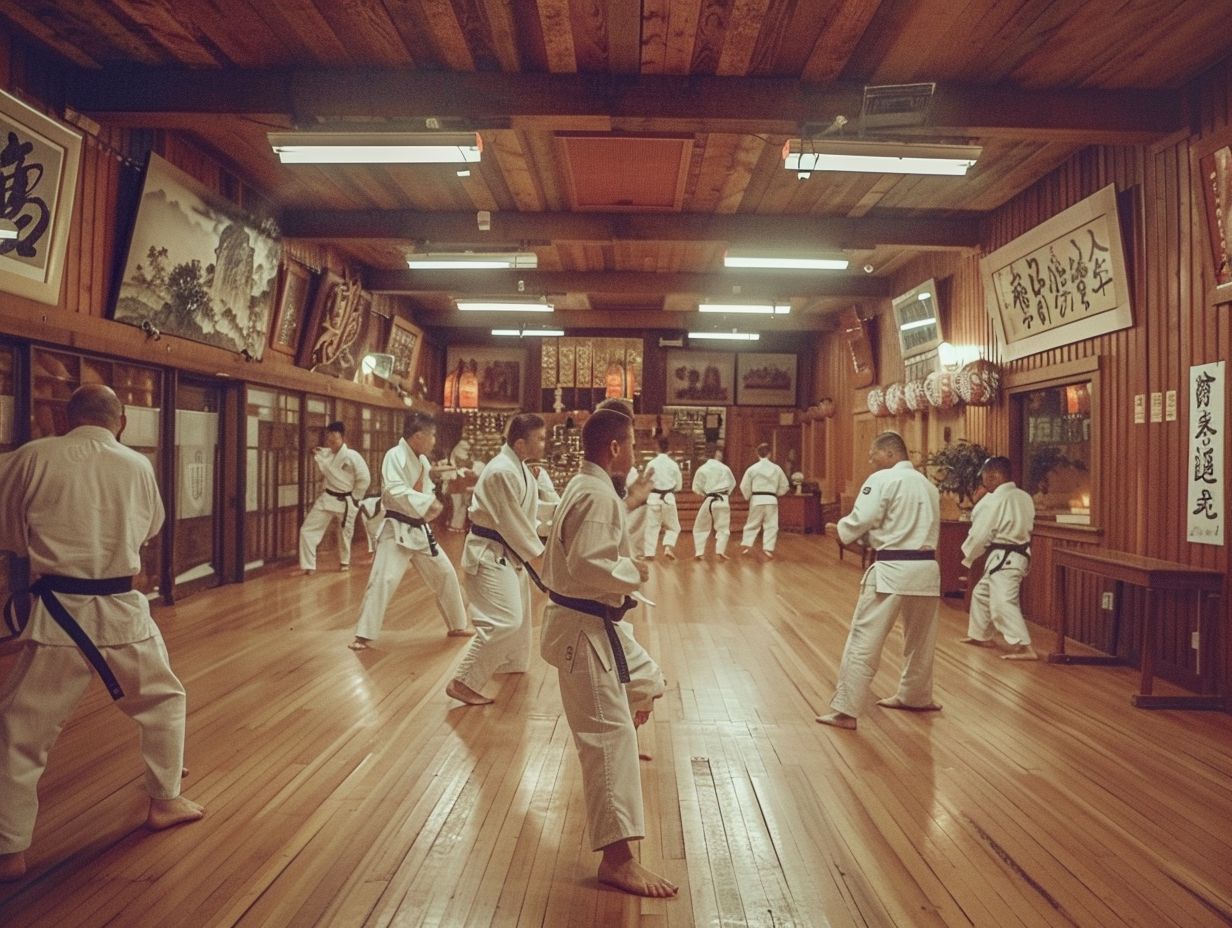
Kempo Karate is said to have been founded by a Chinese Buddhist monk named Chang San-feng. Legend has it that he combined elements of the Shaolin Temple’s martial arts with his own philosophies to create a unique fighting style.
When did Kempo Karate spread to Japan?
Kempo Karate was introduced to Japan in the early 20th century by Gichin Funakoshi, the founder of Shotokan Karate. He learned the style from Anko Itosu, a master who had refined Kempo Karate during the Meiji era.
How did Kempo Karate evolve in Japan?
In Japan, Kempo Karate underwent changes to become more sport-oriented and less focused on self-defense. This led to the creation of different styles such as Shorinji Kempo, Kyokushin, and Gensei-ryu. However, some schools still maintain a more traditional approach to Kempo Karate.
What role did Kempo Karate play in modern martial arts?
Kempo Karate influenced the development of many other martial arts styles, including Karate, Judo, Aikido, and Kung Fu. It also played a significant role in the spread of martial arts to the Western world, with many early pioneers of martial arts in the US being Kempo Karate practitioners.
How has Kempo Karate changed over time?
Kempo Karate has evolved over time to incorporate new techniques and principles, as well as to adapt to different cultural and social norms. Some schools focus more on the spiritual and philosophical aspects of Kempo Karate, while others prioritize physical conditioning and competition. Despite the changes, Kempo Karate remains rooted in its original purpose of self-defense and personal development.

